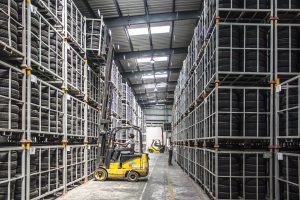How to Make Your Entire Supply Chain Greener

Reduce Distances
Using more local resources is one of the things you can do to make the supply chain of your business a bit greener. When you reduce the amount of distances that products need to travel, it makes it easier for you to reduce your carbon emissions. If you’re supplying items from the other side of the world, that’s obviously going to cause a much greater impact on the planet.
Plan Smarter Routes
The routes you plan can also have an impact when it comes to how green your supply chain is. If you can make sure that you’re taking the smartest and most efficient routes, you should be able to make your supply chain greener than it was before. If you’ve been using the same routes for transporting and distributing goods for a long time, you might not even be aware of how outdated or inefficient they are.
Use Electric Vehicles for Transportation
Another thing to consider when it comes to transportation is using electric vehicles. It’s something that most businesses are now able to embrace. By committing to only transporting goods on the road with electric vehicles, you’ll massively reduce the environmental impact of your business and its entire supply chain. As EVs become more affordable, it’s something more and more businesses are doing. It’s definitely an option for you to explore.
Work with Suppliers That Take a Sustainable Approach
Working with suppliers who are as committed to green changes just as much as you are is obviously something that’s very important. Superior Farms is an example of a food company that’s committed to those goals, and there are similar options in just about every industry and niche. All you need to do is go out of your way to find them and see if you can then work together.
Shrink the Packaging
Shrinking the packaging and making sure that you’re not wasting resources with the packaging you choose is something that’ll be really important. Having green practices in place will be meaningless if you’re relying on tons of plastic to get your products into stores and to customers. So try to find alternative packaging methods and do what you can to shrink the packaging.
It might seem like a lot of work and effort, but taking gradual steps to make your supply chain as green and efficient as it can be will not only help the planet; it’ll help your business too. It becomes a selling point and by maximizing efficiency, you can save yourself a lot of money too.




